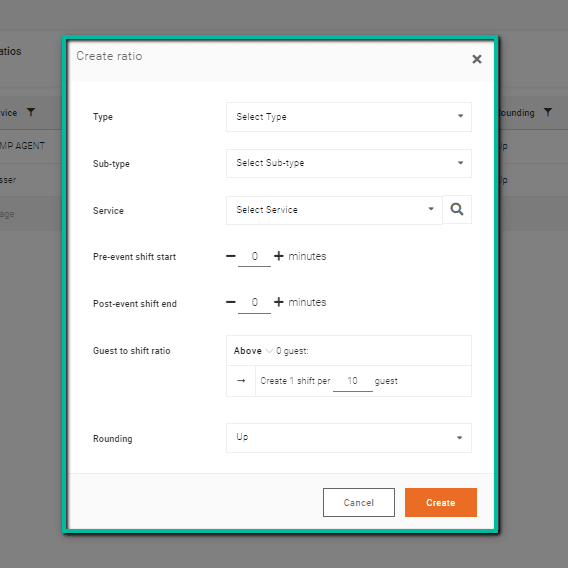One of the biggest challenges of creating employee schedules is knowing how much staff you need for a particular shift. Of course, some businesses will have an idea of their peak times but even still, it can be difficult to get staffing levels right. Luckily for you, our mission here at Celayix is to make scheduling easy. One of the most useful tools we’ve developed since we started over 20 years ago, is our Labor Forecasting tool.
What is Labor Forecasting?

Labor forecasting can be defined as a strategic workforce management procedure that empowers companies to assess their labor demands effectively. By leveraging data-driven insights such as historical data and information derived from project resource management, decision-makers are able to craft precise projections regarding their staffing requirements.
What is the Labor Forecasting tool?
Celayix Labor Forecasting helps you to create a schedule with the perfect number of shifts to optimize your workforce. The most useful application of this feature is in the planning of “events”. In this case, an event can be defined as “any event that you can staff based on pre-determined ratios”. Think of a banquet, a concert, or simply an evening service at a restaurant. Essentially, the software will look at the type of specified event and the number of attendees, using a pre-set ratio to create the necessary shifts.
The forecasting module will also take into account any minimum staffing levels that are required regardless of the event size. Once the labor ratios are created, the scheduler only needs to enter the number of attendees. Then, the labor forecasting module will generate all the necessary shifts. Using one of the automated shift assignment approaches also ensures fairness in shift allocation.
Event Ratios

Ratios are at the core of how the Celayix Labor Forecasting tool works. Event ratios are the key input that needs to be defined. They will be used to generate the necessary shifts based on the specified event. Although most users will only have the Event Type and Event Sub-type defined, our system can be used to define a deeper hierarchy (for example, sub-sub type). This will generally be a one-time setup and you can work with one of our implementation specialists to populate these.
When creating event ratios, there are some other elements that the Celayix Scheduler will consider. First, it will consider the type of service that will be needed for the event (server, bar service, security). It will also consider the Pre-event shift start and Post-event shift end fields. These are used to set how much time in advance of the event start that staff should arrive and when the shift will end at the conclusion of the event.
Next, it will look at the Guest-Shift Ratio. This is where the ratio of employees to guests is defined. Ratios can be simple to complex with minimum staffing specified as well as non-linear changes depending on the staff count. And finally, Rounding allows the system to know what to do if the amount of guests falls in-between a ratio. For example, if you have specified 1 shift for every 10 guests, this field will determine what happens if only 7 guests are attending. Once you’ve created all of your event ratios, these can be used to create schedules based on the events taking place for the specified time period.
Linking Events
It is possible to link an event with the Scheduler. A possible use for this is that the user wants to use the same group of employees for multiple events. For example, there may be a breakfast event in the morning and a lunch event later in the day. Rather than using a different group of employees the user wants the system to schedule from the breakfast event. This can be achieved using Find replacement and Autofill when scheduling but first the events must be linked.
Benefits of the Labor Forecasting Tool
There are two major benefits to using a tool like Labor Forecasting – saving time and saving money.
Save Time Scheduling
As we mentioned, creating event ratios is a one-time setup. This means that any time you need to use labor forecasting to staff an “event”, you simply need to input the number of attendees. Without a labor forecasting tool, schedulers often spend more time focusing on the day of an event than the rest of the schedule. This does not need to be the case. With labor forecasting, scheduling an event is just like scheduling any other day with Celayix, fast and easy.

Save Money
Not only does Labor Forecasting save you time when creating schedules, but it also helps you achieve optimized schedules in terms of staffing levels. It is so common to overschedule an event, and this is money that could be better spent elsewhere in the business. By only scheduling the staff that is actually required, you avoid running into overtime hours, and you can fully maximize your workforce. If you can cut even 1-2 staff members per shift, you can make great savings on payroll. Labor Forecasting helps you identify where this can happen.
Labor Forecasting has the potential to help you fully optimize your business and your shift scheduling. Pair this tool with other features from Celayix such as autofill, find replacement, self-scheduling, shift bidding and artificial intelligence, and you see how powerful shift scheduling & time and attendance software can be. If you’d like to hear more about labor forecasting, or any other features of Celayix, get in touch with one of our Solution Advisors today.





